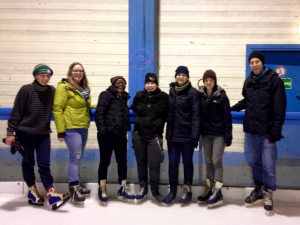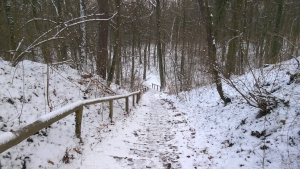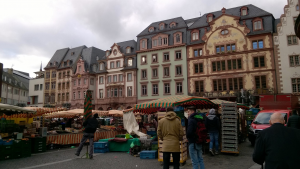- About
- Members
- Join
- Member log in
- Membership Renewal
- Member directory
- Life Members
- ASPS Life Member Professor Graham Farquhar
- ASPS Life Member Associate Professor Hendrik (Hank) Greenway
- ASPS Life Member Dr Marshall (Hal) D Hatch
- ASPS Life Member Dr Paul E Kriedmann
- ASPS Life Member Dr Mervyn Ludlow
- ASPS Life Member Emeritus Professor Rana Munns
- ASPS Life Member Conjoint Professor Christina E Offler
- ASPS Life Member Professor (Charles) Barry Osmond
- ASPS Life Member Emeritus Professor John W Patrick
- ASPS Life Member Dr Joe Wiskich
- Corresponding Members
- Elected Fellows
- Events
- Awards & Funding
- Employment
- Publications
- Research
- Teaching
- Menu
ComBio2016 provisional symposium schedule
19 May 2016
|
ComBio2016: 3-7 October 2016 – Brisbane Convention & Exhibition Centre Dear Past and Present Members is now available and can be downloaded from http://www.asbmb.org.au/combio2016/symposia.html Overseas plenary speakers can be viewed at: http://www.asbmb.org.au/combio2016/plenary.html Most of the photographs and biographies of these prestigious scientists can now be viewed from this page. The latest advertisement for the conference which includes the overseas plenary speakers and the conference themes can be downloaded from: http://www.asbmb.org.au/combio2016/ – please see the bottom right hand side of this page. It is also available at: http://www.asbmb.org.au/combio2016/timetable.html Online registration and abstract submission is open and you can register at: Please note that you need to register prior to submitting your abstract. We have held blocks of well priced accommodation close to the Brisbane Convention Centre, and have recently secured two bedroom/two bathroom apartments at $268/night (only $67/night per person with four sharing the apartment). Details can be found at: http://www.asbmb.org.au/combio2016/accommodation.html Further information: Sally Jay: combio@asbmb.org.au |
ComBio 2015 Travel Grant Report by Millicent Smith
19 May 2016
PhD Candidate, Centre for Carbon Water and Food, Faculty of Agriculture and Environment
The University of Sydney
As an ASPS travel grant recipient I was able to attend ComBio 2015 to present research from a collaborative project between the University of Sydney and Forschungszentrum Jülich. The mobile nuclear magnetic resonance sensor (mNMR) recently developed at the Bio- and Geosciences Research Institute (IBG-2) at Forschungszentrum Jülich in Germany allows the non-invasive, real-time measurement of water status and dry matter accumulation during seed development. My PhD research focuses on the impact of drought and nutrient deficiency on photosynthetic capacity in common bean and the conversion of this energy into yield, particularly the nutritional quality of yield. Plant phenotyping technologies have an important role to play in this area and are evolving quickly to provide real time information about plant growth and development. It is an exciting field and it was great to share my research with the scientific community at ComBio.
The conference helped me improve my confidence and communication skills through having interesting discussions with other researchers about the future applications of the mNMR sensor technology. I am now determined to write up a manuscript sooner rather than later! Being exposed to a broad scope of research presented at COMBIO that is beyond what I would normally explore has made me excited about the possibilities awaiting me as a young member of the Australian plant science community. I am very grateful to the Australian Society of Plant Scientists for providing an opportunity to travel to ComBio in 2015.
C4 photosynthesis in a genus of succulents native to Australian salt lakes
11 May 2016
R.N. Robertson Travelling Fellowship Report by Nicole Dakin
(School of Chemistry and Biochemistry, University of Western Australia)
At first, you wouldn’t think there was much connection between a snow-covered forest in Germany, and a sunny salt lake in Australia. My PhD project investigates C4 photosynthesis in Tecticornia, a genus of succulents native to Australian salt lakes (Photo 1). Through the support of the R.N. Robertson Travelling Fellowship, I travelled to Mainz, Germany to complete part of my research, supervised by Dr. Gudrun Kadereit at the Johannes Gutenberg Universität Mainz.
 Photo 1: Tecticornia indica subsp. bidens, a C4 species. An example of a vegetative article is shown. Photo 1: Tecticornia indica subsp. bidens, a C4 species. An example of a vegetative article is shown. |
Tecticornia is a genus in the family Chenopodiaceae. These plants are halophytes, and the majority of species are endemic to Western Australia. Tecticornia species have highly reduced features, an adaptation to the harsh conditions in which they live. Their stems and leaves are fused into cylindrical structures called vegetative articles (see photograph included). Their flowers are embedded in these vegetative articles, with only the stamens visible. This leaves few morphological features to identify species, and discerning between species can be challenging. In addition, hybridisation and variation in ploidy levels are common. Previous phylogenetic studies have found low genetic diversity between species. The phylogeny of the genus remains unresolved, and the relationships among the species are not clear.
Tecticornia currently includes two C4 species and 39 C3 species. These C4 species among a large number of C3 species make it an interesting genus for studying the steps in the evolution of C4 photosynthesis. The evolution of C4 photosynthesis involves changes in anatomy, protein localisation, and expression, and my PhD project sets out to study these steps in Tecticornia. However, before these studies can be completed, the C3 species most closely related to the C4 species must be identified.
My aim during my time in Germany was to use the external transcribed spacer (ETS) region as a nuclear marker to construct a phylogeny of the genus. Previous studies have used chloroplast markers and the internal transcribed spacer region (ITS) marker, and information from the ETS marker would further contribute to resolving the phylogeny of the genus.
A question I was asked a lot was “Why would a Western Australian student, studying a Western Australian genus, come to Germany?” Members of the Kadereit lab (Photo 2) are experts in the family Chenopodiaceae, conducting studies into the phylogenetics, biogeography, anatomy, and taxonomy of a wide range of species in this family. Members of the lab have completed studies into particular genera, and broader-scale studies of the family, and have integrated these studies with their extensive knowledge of the biology of the plants.

Photo 2: Ice-skating with Gudrun, and other students from the Kadereit lab. |
I learnt how to extract total DNA from dried herbarium tissue, amplify the ETS fragment, and determine sequences from over 70 samples. These sequences were aligned, and I was taught how to use various programs to construct phylogenetic trees. The phylogenetic reconstruction was a lot more challenging than first expected. The amplification of paralogous sequences caused unusual branch lengths in the first trees constructed, and conflict between trees using different markers. Some samples had to be repeated with different primer pairs to obtain the orthologous sequences. The amplification of paralogues is an unusual problem, and is thought to be due to recent hybridisation between species.
The ETS phylogeny, combined with the ITS marker, had greater resolution compared to previous studies. A number of well-supported clades could be seen, dividing the genus into groups. The position of the C4 species indicates they form a separate clade. The phylogeny revealed that the Tecticornia are a very young C4 lineage. A rapid diversification and hybridisation, as seen from the paralogous sequences, make it a challenging genus to fully resolve. The information from this phylogeny will help choose further markers to fully resolve the species relationships in the genus.

Photo 3. A snow-covered scene in the Lennebergwald forest, Mainz. |
I was also able to connect my findings with other studies. For example I was able to fit my phylogeny into a larger ETS phylogeny of a subfamily of Chenopodiaceae. My study, as well as increasing knowledge of Tecticornia, will also be valuable in resolving relationships across the whole family. I also picked up skills in hydrating dry herbarium material, and sectioning it to look at the anatomy; a difficult task for succulent tissue.
I used my free time to explore the city of Mainz. There was a beautiful forest close to where I was staying (Photo 3), and many museums and historical sites (Photo 4). Mainz, located on the Rhine River, has a rich history, and is the birthplace of Johannes Gutenberg, inventor of the first printing press.
 Photo 4. Exploring the markets in the centre of Mainz. Photo 4. Exploring the markets in the centre of Mainz. |
Thank you to Gudrun Kadereit for her mentorship and teaching, and thank you to my other supervisors: Martha Ludwig from the University of Western Australia, and Kelly Shepherd, and Terry MacFarlane from the Western Australian Herbarium. Thank you to Silvia Wienken and Max Lauterbach, and the members of the Kadereit lab who gave me advice and help during my stay: Michael Pirie, Uschi Martine, Katherina Bohley, and Denise Schmidt. And thank you to the ASPS for the honour of receiving the R.N. Robertson Travelling Fellowship, and allowing me to undertake this research.
Email: nicole.dakin@research.uwa.edu.au
ComBio2016 update, Science and Technology Australia newsletter and Global Plant Council E-Bulletin April 2016
09 May 2016
Your membership is paid to [wpmlfield name=”paidtodate”] (Year, Month, Day)
-
ComBio2016 – updated , timetable and Power Point
-
Ulrike Mathesius represents ASPS on the Science and Technology Australia board and would like to forward a special newsletter for the federal budget that might be interesting for ASPS members. Available here.
-
Global Plant Council E-Bulletin April 2016
|
|||||||||||||||||||||||||||||||||||||
|
|||||||||||||||||||||||||||||||||||||
|
|||||||||||||||||||||||||||||||||||||
|
Characterisation of the low affinity ammonium transporters in maize
01 May 2016
by Wending Li
ASPS Travel Awards Recipients for ComBio2015
PhD candidate, Centre for Carbon, Water and Food, Faculty of Agriculture and Environment, The University of Sydney
My research focuses on understanding ammonium transport in maize. In agricultural plant production, nitrogen fertilisers are used widely where ~1011 kg of nitrogen fertilizers are used annualy (Glass, 2003). The cultivation of cereals (wheat, maize, barley, rice) requires a significant amount of nitrogen fertiliser. Unfortunately, cereal N fertiliser use is poor, where only 30-50% of the total N applied is actually used for the production of the final grain yield (Raun and Johnson, 1999; Tilman et al., 2002). Low nitrogen use efficiencies can result in the loss of nitrogen into the environment, which causes water and soil pollution as well as greenhouse gas production (Masclaux-Daubresse et al., 2010). In addition, the waste of nitrogen fertilizers also gives rise to financial losses to the farmers, a significant cost in the production cycle. Therefore, improving plant nitrogen use efficiency (NUE) is an important strategy to overcome many of these constraints. One direction in enhancing NUE in plants is to increase the efficiency of root N transport processes. This includes, the proteins involved in the uptake of nitrogen from the soil as well as the internal storage and redistribution of nitrogen required to support growth and final seed yield and quality (Garnett et al., 2009).
Ammonium is a major form of nitrogen absorbed by plants and can be redistributed through high and low affinity pathways. The physiological and molecular activities of high-affinity ammonium transporters have been examined in numerous plant species, which belong to the AMT/MEP/Rhesus superfamily. Conversely, molecular information about low-affinity ammonium transport systems remains limited. Recently, our lab has discovered a new family of low affinity ammonium transport proteins called AMF1 (ammonium facilitator 1) (Chiasson et al., 2014). Through sequence homology, we found two AMF1 homologs in maize, which are ZmAMF1;1 and ZmAMF1;2. I have been investigating the function of these two genes in maize as well as using heterologous expression systems (yeast and Xenopus laevis oocytes) to define their functional relevance in nitrogen transport and overall plant growth. In maize, I’ve observed ZmAMF1 is induced by nitrogen starvation in roots, while both ZmAMF1 and ZmAMF2 are preferentially expressed in the shoots. The cellular location of both genes is currently being identified using a native promoter::GUS fusion construct transformed into the dwarf maize inbred line Gaspe. I have undertaken a reverse genetics approach in maize using a collection of Mu transposon insertion lines within exon and promoter loci of either ZmAMF1 or ZmAMF2 (provided by B. Meeley, DuPont Pioneer). We have progressed the transposon lines through a series of backcrosses to B73 and Gaspe using a diagnostic PCR screening assay. Mutant plants containing perturbations in ammonium transport in maize are undergoing characterisation. This project will contribute to a better understanding of the role AMF1 proteins in plant N transport and metabolism, including their role as low-affinity ammonium transporters. Our research will improve our understanding of nitrogen uptake and redistribution in plants, whiles also establishing new strategies to improve nitrogen use efficiency, plant growth and development.
Reference:
Chiasson DM, Loughlin PC, Mazurkiewicz D, Mohammadidehcheshmeh M, Fedorova EE, Okamoto M, McLean E, Glass AD, Smith SE, Bisseling T (2014) Soybean SAT1 (Symbiotic Ammonium Transporter 1) encodes a bHLH transcription factor involved in nodule growth and NH4+ transport. Proceedings of the National Academy of Sciences 111: 4814-4819
Garnett T, Conn V, Kaiser BN (2009) Root based approaches to improving nitrogen use efficiency in plants. Plant, cell & environment 32: 1272-1283
Glass AD (2003) Nitrogen use efficiency of crop plants: physiological constraints upon nitrogen absorption. Critical Reviews in Plant Sciences 22: 453-470
Masclaux-Daubresse C, Daniel-Vedele F, Dechorgnat J, Chardon F, Gaufichon L, Suzuki A (2010) Nitrogen uptake, assimilation and remobilization in plants: challenges for sustainable and productive agriculture. Annals of Botany 105: 1141-1157
Raun WR, Johnson GV (1999) Improving nitrogen use efficiency for cereal production. Agronomy Journal 91: 357-363
Tilman D, Cassman KG, Matson PA, Naylor R, Polasky S (2002) Agricultural sustainability and intensive production practices. Nature 418: 671-677
Recent Posts
Tags
Archives
- June 2025
- May 2025
- April 2025
- March 2025
- February 2025
- January 2025
- December 2024
- November 2024
- October 2024
- September 2024
- August 2024
- July 2024
- June 2024
- May 2024
- April 2024
- February 2024
- January 2024
- November 2023
- October 2023
- September 2023
- August 2023
- July 2023
- June 2023
- May 2023
- April 2023
- March 2023
- February 2023
- December 2022
- November 2022
- October 2022
- September 2022
- August 2022
- July 2022
- June 2022
- May 2022
- April 2022
- March 2022
- February 2022
- January 2022
- December 2021
- November 2021
- October 2021
- September 2021
- August 2021
- July 2021
- June 2021
- April 2021
- March 2021
- February 2021
- January 2021
- December 2020
- November 2020
- October 2020
- September 2020
- August 2020
- July 2020
- June 2020
- May 2020
- April 2020
- March 2020
- February 2020
- January 2020
- December 2019
- November 2019
- October 2019
- September 2019
- August 2019
- July 2019
- June 2019
- May 2019
- April 2019
- March 2019
- February 2019
- January 2019
- December 2018
- November 2018
- October 2018
- September 2018
- August 2018
- July 2018
- June 2018
- May 2018
- April 2018
- March 2018
- February 2018
- January 2018
- December 2017
- November 2017
- October 2017
- September 2017
- August 2017
- July 2017
- June 2017
- May 2017
- April 2017
- March 2017
- February 2017
- January 2017
- December 2016
- November 2016
- October 2016
- September 2016
- August 2016
- July 2016
- June 2016
- May 2016
- April 2016
- March 2016
- February 2016
- January 2016
- December 2015
- November 2015
- October 2015
- September 2015
- August 2015
- July 2015
- June 2015
- May 2015
- April 2015
- March 2015
- February 2015
- January 2015
- December 2014
- November 2014
- October 2014
- September 2014
- August 2014
- July 2014
- June 2014
Copyright 2017 Australian Society of Plant Scientists Disclaimer & Privacy
Website by Michael Major Media






